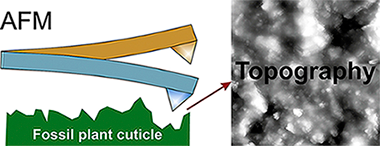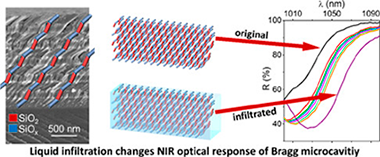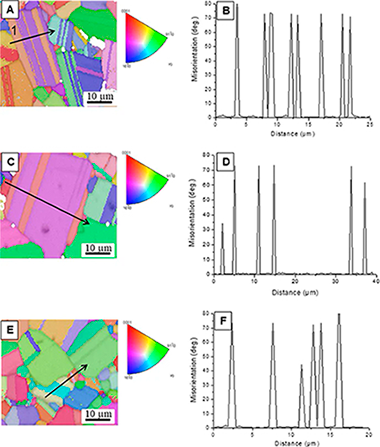Artículos SCI
2019
2019
Materiales de Diseño para la Energía y Medioambiente
Correlation of Structure and Performance of Hard Carbons as Anodes for Sodium Ion Batteries
Gomez-Martin, A; Martinez-Fernandez, J; Ruttert, M; Winter, M; Placke, T; Ramirez-Rico, JChemistry of Materials, 31 (2019) 7288-7299
Show abstract ▽

Hard carbons are the material of choice as negative electrode in sodium ion batteries. Despite being extensively studied, there is still debate regarding the mechanisms responsible for storage in low- and high-potential regions. This work presents a comprehensive approach to elucidate the involved storage mechanisms when Na ions insert into such disordered structures. Synchrotron X-ray total scattering experiments were performed to access quantitative information on atomic ordering in these materials at the nanoscale. Results prove that hard carbons undergo an atomic rearrangement as the graphene layers cross-link at intermediate temperatures (1200-1600 degrees C), resulting in an increase of the average interplanar distance up to 1400 degrees C, followed by a progressive decrease. This increase correlates with the positive trend in the reversible capacity of biomass-derived carbons when processed up to 1200-1600 degrees C due to an increased capacity at low potential (<= 0.1 V vs Na/Na+). A decrease in achievable sloping capacity with increasing heat-treatment temperature arises from larger crystalline domains and a lower concentration of defects. The observed correlation between structural parameters and electrochemical properties clearly supports that the main storage of Na ions into a hard-carbon structure is based on an adsorption-intercalation mechanism.
Septiembre, 2019 | DOI: 10.1021/acs.chemmater.9b01768
Nanotecnología en Superficies y Plasma
Antibacterial Nanostructured Ti Coatings by Magnetron Sputtering: From Laboratory Scales to Industrial Reactors
Alvarez, R; Munoz-Pina, S; Gonzalez, MU; Izquierdo-Barba, I; Fernandez-Martinez, I; Rico, V; Arcos, D; Garcia-Valenzuela, A; Palmero, A; Vallet-Regi, M; Gonzalez-Elipe, AR; Garcia-Martin, JMNanomaterials, 9 (2019) art. 1217
Show abstract ▽

Based on an already tested laboratory procedure, a new magnetron sputtering methodology to simultaneously coat two-sides of large area implants (up to similar to 15 cm(2)) with Ti nanocolumns in industrial reactors has been developed. By analyzing the required growth conditions in a laboratory setup, a new geometry and methodology have been proposed and tested in a semi-industrial scale reactor. A bone plate (DePuy Synthes) and a pseudo-rectangular bone plate extracted from a patient were coated following the new methodology, obtaining that their osteoblast proliferation efficiency and antibacterial functionality were equivalent to the coatings grown in the laboratory reactor on small areas. In particular, two kinds of experiments were performed: Analysis of bacterial adhesion and biofilm formation, and osteoblasts-bacteria competitive in vitro growth scenarios. In all these cases, the coatings show an opposite behavior toward osteoblast and bacterial proliferation, demonstrating that the proposed methodology represents a valid approach for industrial production and practical application of nanostructured titanium coatings.
Septiembre, 2019 | DOI: 10.3390/nano9091217
Materiales de Diseño para la Energía y Medioambiente
Applications and potentialities of Atomic Force Microscopy in fossil and extant plant cuticle characterization
Benitez, JJ; Guzman-Puyol, S; Dominguez, E; Heredia, A; Heredia-Guerrero, JAReview of Palaeobotany and Palynology, 268 (2019) 125-132
Show abstract ▽

Atomic Force Microscopy (AFM) is a versatile technique of surface characterization, providing accurate information about the topography and other wide variety of magnitudes at submicron scale. It is extensively utilized in materials science, but its use in other disciplines such as paleobotany is infrequent. In this review, we introduce the main concepts of AFM to paleobotanists, comparing the characteristics of this technique to common electronic and optical microscopies. Then, main works with extant plants, in particular plant cuticles, are described. Finally, realistic applications with fossils are reviewed and their potential use in the characterization of plant fossils discussed. AFM is proposed as a complementary technique to common microscopies to characterize plant cuticle fine details at nanoscale.
Septiembre, 2019 | DOI: 10.1016/j.revpalbo.2019.06.015
Nanotecnología en Superficies y Plasma
SiOx by magnetron sputtered revisited: Tailoring the photonic properties of multilayers
Garcia-Valenzuela, A; Alvarez, R; Espinos, JP; Rico, V; Gil-Rostra, J; Palmero, A; Gonzalez-Elipe, ARApplied Surface Science, 488 (2019) 791-800
Show abstract ▽

Traditionally porous silicon based photonic structures have been prepared by electrochemically etching of silicon. In this work, porous multilayers of nanocolumnar SiOx and SiO2 thin films acting as near infrared (NIR) 1D-photonic nanostructures are prepared by magnetron sputtering deposition at oblique angles (MS-OA). Simultaneous control of porosity and stoichiometry of the stacked films is achieved by adjusting the deposition angle and oxygen partial pressure according to a parametric formula. This new methodologoy is proved for the synthesis of SiOx thin films with x close to 0.4, 0.8, 1.2, 1.6 and nanostructures varying from compact (at 0 degrees deposition angle) to highly porous and nanocolumnar (at 70 degrees and 85 degrees deposition angles). The strict control of composition, structure and nanostructure provided by this technique permits a fine tuning of the absorption edge and refraction index at 1500 nm of the porous films and their manufacturing in the form of SiOx-SiO2 porous multilayers acting as near infrared (NIR) 1D-photonic structures with well-defined optofluidic responses. Liquid tunable NIR Bragg mirrors and Bragg microcavities for liquid sensing applications are presented as proof of concept of the possibilities of this MS-OA manufacturing method as an alternative to the conventional electrochemical fabrication of silicon based photonic structures.
Septiembre, 2019 | DOI: 10.1016/j.apsusc.2019.05.273
2018
2018
Propiedades mecánicas, modelización y caracterización de cerámicos avanzados
Elusive super-hard B6C accessible through the laser-floating zone method
Moshtaghioun, BM; Cumbrera, FL; Gomez-Garcia, D; Pena, JIScientific Reports, 9 (2019) art. 13340
Show abstract ▽

Boron carbide is among the most promising ceramic materials nowadays: their mechanical properties are outstanding, and they open potential critical applications in near future. Since sinterability is the most critical drawback to this goal, innovative and competitive sintering procedures are attractive research topics in the science and technology of this carbide. This work reports the pioneer use of the laser-floating zone technique with this carbide. Crystallographic, microstructural and mechanical characterization of the so-prepared samples is carefully analysed. One unexpected output is the fabrication of a B6C composite when critical conditions of growth rate are adopted. Since this is one of the hardest materials in Nature and it is achievable only under extremely high pressures and temperatures in hot-pressing, the use of this technique offers a promising alternative for the fabrication. Hardness and elastic modulus of this material reached to 52 GPa and 600 GPa respectively, which is close to theoretical predictions reported in literature.
Septiembre, 2019 | DOI: 10.1038/s41598-019-49985-2
- ‹ anterior
- 126 of 420
- siguiente ›














